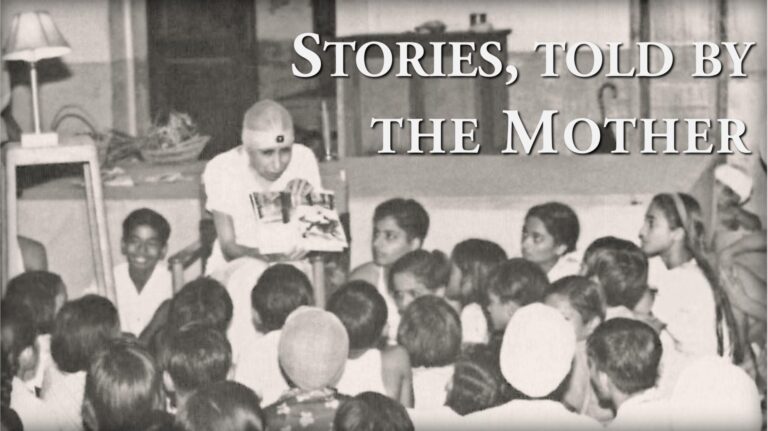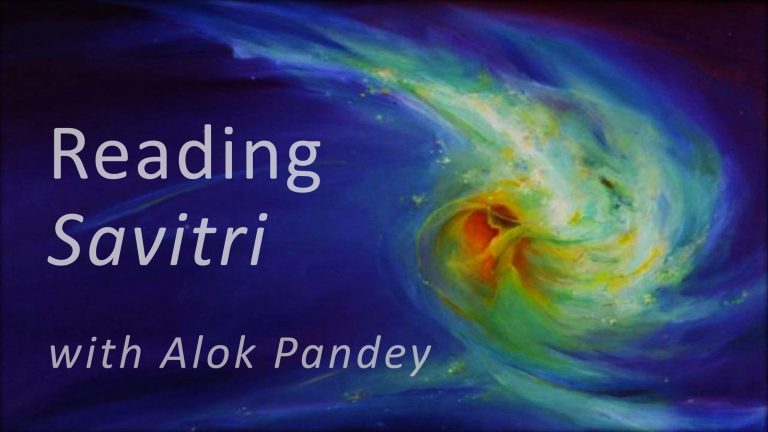The Yoga is utter freedom. It is also the royal road to Truth in all its complexity and completeness. It is a science in its right as it teaches us the various ways. Yet like all sciences and arts it has also evolved with man and is continuing to evolve until the yoga of man becomes one with the Yoga of the Divine. The Yoga of the Divine is to manifest the Divine Perfection upon earth. Man’s Yoga too will arrive at its perfect fullness when he unites the earth with the Divine in a perfect and harmonious oneness. This will be the perfect remedy of all our ills, not a palliative or even a preventive but transformative with no further possibility of suffering and evil, illness and grief and sorrow and pain. Meanwhile Yoga itself is evolving even as it helps man to evolve. In other words there is a Yoga most suited to each evolutionary stage arranging themselves in a hierarchical system.
The evolution of man has been upwards from the body to the spirit, and there are three stages in his progress. He bases himself upon body, rises through soul and culminates in spirit. And to each stage of his evolution belong certain kinds of sadhana, a particular type of Yoga, a characteristic fulfilment. There was no aeon in man’s history, no kalpa, to use the Indian term, in which the Yoga was withheld from man or fulfilment denied to him. But the fulfilment corresponded to his stage of progress, and the Yoga corresponded to the fulfilment. In his earlier development he was realising himself in the body and the divinity of the body was his fulfilment. He is now realising himself in the heart and mind, and the divinity of the heart and mind will be his culmination. Eventually he will realise himself in the spirit and the divinity of his true spiritual self-will round off his history….
Man fulfilling himself in the body is given Hathayoga as his means. When he rises above the body, he abandons Hathayoga as a troublesome and inferior process and rises to the Rajayoga, the discipline peculiar to the aeon in which man now evolves. The first condition of success in Rajayoga is to rise superior to the dehatmak bodh, the state of perception in which the body is identified with the self. A time comes to the Rajayogin when his body seems not to belong to him or he to have any concern with it. He is not troubled by its troubles or gladdened by its pleasures; it has them to itself and very soon, because he does not give his sanction to them, they fall away from it. His own troubles and pleasures are in the heart and mind, for he is the rajasic and psychical man, not the tamasic material. It is these that he has to conquer in order that he may realise God in his heart or in his buddhi or in both. God seen in the heart, that is the quest of the Rajayogin. He may recover the perception and enjoyment of the body afterwards, but it is only to help the enjoyment of God as Love and God as Knowledge. [CWSA 1: 503, 507]
The Hathyoga that seems to be the oldest kind of practice seems to be the product of an Age when the physical man or rather humanity was largely centered around the body and the vital physical nature. It was closer to the animal kind and knew the body to be the self. Hence the elaborate practices to release the consciousness trapped in the material case. The Hathyoga brought out unusual potential latent in the body and by going deeper within the body and its vital nervous energy body sought for its secret soul. The results were astounding as far as the body is concerned but the process was too cumbersome and instead of finding the soul they ended up discovering the physical purusha, the self of the body. This type of Yoga has always been a favourite to the early forms of a Rakshasic and Animal humanity whose seat is largely in the vital. In the modern version of the Hathyoga the strenuous asanas are rarely practiced. It has been reduced to exercises for physical health and through the practice of pranayam an increase in the vital energy and the smooth flow of pranic energies through the human system.
As man evolves further and becomes aware of his mental world then we see the emergence of Rajyoga. Rajyoga is mainly focused on the control of and control by the mind. Rajyoga mainly arrives largely at mind control and through that unleashes the full possibilities of the mind. It is through the mind it seeks to discover the secret soul and ends up discovering the mental witness purusha. Rajyoga does augment mind capacities and adds new ones which is why it is the favourite of the Asuric type whose seat is largely in the mind. It may be noted that the way we look at these terms today in a rather judgmental and often pejorative sense is not how the pragmatic and soberer ancient thought of India looked at it. Instead of the oversimplified binaries of good and bad, Yoga looks at humanity not as something fixed forever but along a graded evolutionary scale. Yoga takes its stand on the possibility of evolution and hence accepts that human beings can change. But unlike the Behaviorists, Yoga looks for the inner springs and secret keys that Nature has ‘carelessly’ dropped or ‘carefully’ hidden. It is by handling these inner and occult springs of our actions that Yoga proposes to change human nature, including our character and personality. This is different from manipulating behaviour through the process of conditioning and other such means as reward and punishment. These outer means change the surfaces and the change lasts by force of habit and not as an authentic inner shift. Given an opportunity the surface behavioural change breaks down easily. On the other hand the change of patterns brought about by the Yoga shows up last on the surface but endures once it is established in the outer nature.
As man evolved and started exploring the different dimensions of his subjective self, he discovered three main keys within him. These keys, though blunted through wrong use could, if potentiated and rightly used open still deeper inner doors upon the deepest Reality that we carry within us. These three keys are will, emotions and thought. Normally these keys are used to open outer locks for limited gains. Will is used to satisfy desires and ambitions. Emotions are used for joys of relationships and the sense of belonging that attachment provides giving a feeling of security. Thought is used to understand and gain knowledge generally of a pragmatic nature so that one can deal better with the world and the challenges of life. However these three keys can be potentiated by concentrating their energy upon a single object or subject. Will turning towards service of the Divine Master who governs all works and existence, emotions turning towards love and adoration of the Divine in a manifold relationship, thought turning towards a deeper and comprehensive understanding of Truth and the Creator, the Source and Origin of all things become powerful levers for entering into Yoga. This method of turning our entire subjective being into a means of the Divine discovery is the triple path as enunciated in the Gita though sometimes it is used as three separate streams as if different paths of Yoga, namely karma, bhakti, gyana. But just as we cannot split the human consciousness into different sections except for the convenience of understanding (they are always interlocked and interconnected) so too the three paths are in reality one Path. It is only by varying the degree of stress that they become three.
Hathyoga leads to body control and to a certain extent control of the life force leading to the discovery of the Self in the body and life energy, annamaya and pranamaya Purusha. Rajyoga leads to discovery of the Self in the Mind, the Manomaya Purusha. The triple path leads to the discovery of the Spiritual Self. That is why it is sometimes called as the adhyatma Yoga. Any of.these different paths can take a leap from where they take us into the utter Unity of God where all paths would eventually converge of the soul is not satisfied with the partial gains and the lure of this – worldly and other – worldly powers. In fact such a lure that takes the form of a spiritual ambition may well lead even to a precipitous fall whence the lesson of humility is learnt and the soul rises again to the point from where it fell and go further. For once th journey has begun the spiritual destiny is certain. It may be delayed but never thwarted for good. Due to this risk of fall most Vedantic yogas shun it or try to stay away from it as long as and as much as possible. Hence they learn upon the Divine as the Silent Witness Purusha or the Ishwara who draws the human soul upwards as a magnet helping us when we need. But then these schools of yoga leave much of the dynamic world play in the hands of a seemingly incurable darkness seeking a solitary escape from an incurable darkness. They understand Purusha but not Prakriti. They turn to the Ishwara but leave His Shakti labouring in the world to Her mysterious ways directed towards mysterious ends in the mysterious play of Creation.




